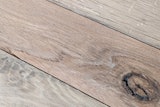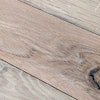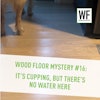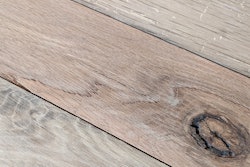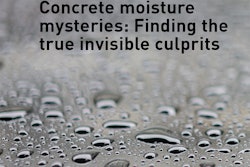
The Problem
I was called to inspect the wood flooring in a new home in the Southeast due to splinters and missing pieces of the flooring surface.
What Happened
Approximately 1,500 square feet of ⅜-by-5-inch engineered flooring was glued to the OSB subfloor throughout the first floor. The factory-finished flooring was a scraped/wire-brushed rotary-peeled hickory product with an HDF core, a thin veneer and a brown stain.
The homeowners said the problems were first noted during their walk-through two days before moving in during late summer. They reported their concerns to the builder on the day they moved in, and in the months since then, both parents and all four children had gotten splinters in their socks and/or feet. Over the months the splinters, along with areas that looked “chipped” with small missing pieces of the flooring, had gotten worse. In addition, one board appeared to be coming apart. The builder said this was “normal” for this type of flooring and gave the homeowners a stain pen to touch up the bare spots as they occurred; there was no offer to do repairs. Another inspector had determined the problems were from rubber mallets during installation, as well as wear from the children and bad maintenance practices. By the time of my inspection, the homeowners reported more than 100 boards with splinters and/or chips. They also reported that they do not mop the floor; their only maintenance is to vacuum it with a vacuum without a beater bar.
RELATED: Should Homeowners be Refunded for Splintering Floor?
The Inspection
From a standing position, I observed slivers out of the face of boards, missing splinters on the bevels, fiber tears from shake and chips out of the face in scraped areas and shake areas. I moved the couch and found lifted slivers of shake. Inspecting on my knees, I could find no scratching or denting in the finish at or near the areas with missing pieces of wood.
I measured the moisture of the subfloor at 13.5–14.5% MC, and the flooring between 7.2–8.6% MC. The humidity was 55.8% and the temperature was 71 degrees Fahrenheit.
The excessive splintering, missing slivers of wood and raised flaking shake are consistent with a manufacturing defect and possible moisture-related issues on site at the time of the installation of the hardwood floors.
How to Fix the Floor
The manufacturer had to replace the entire floor.
RELATED: Engineered Enigmas: Know These Answers to Avoid Problems
In the Future
Consumer should do their best to research the pros and cons of the type of product they are choosing, but it’s hard for them to foresee these issues. The advice of a knowledgeable wood flooring professional is the best insurance against this type of problem.











